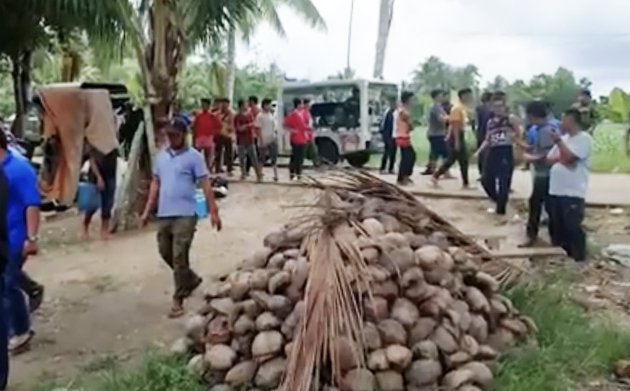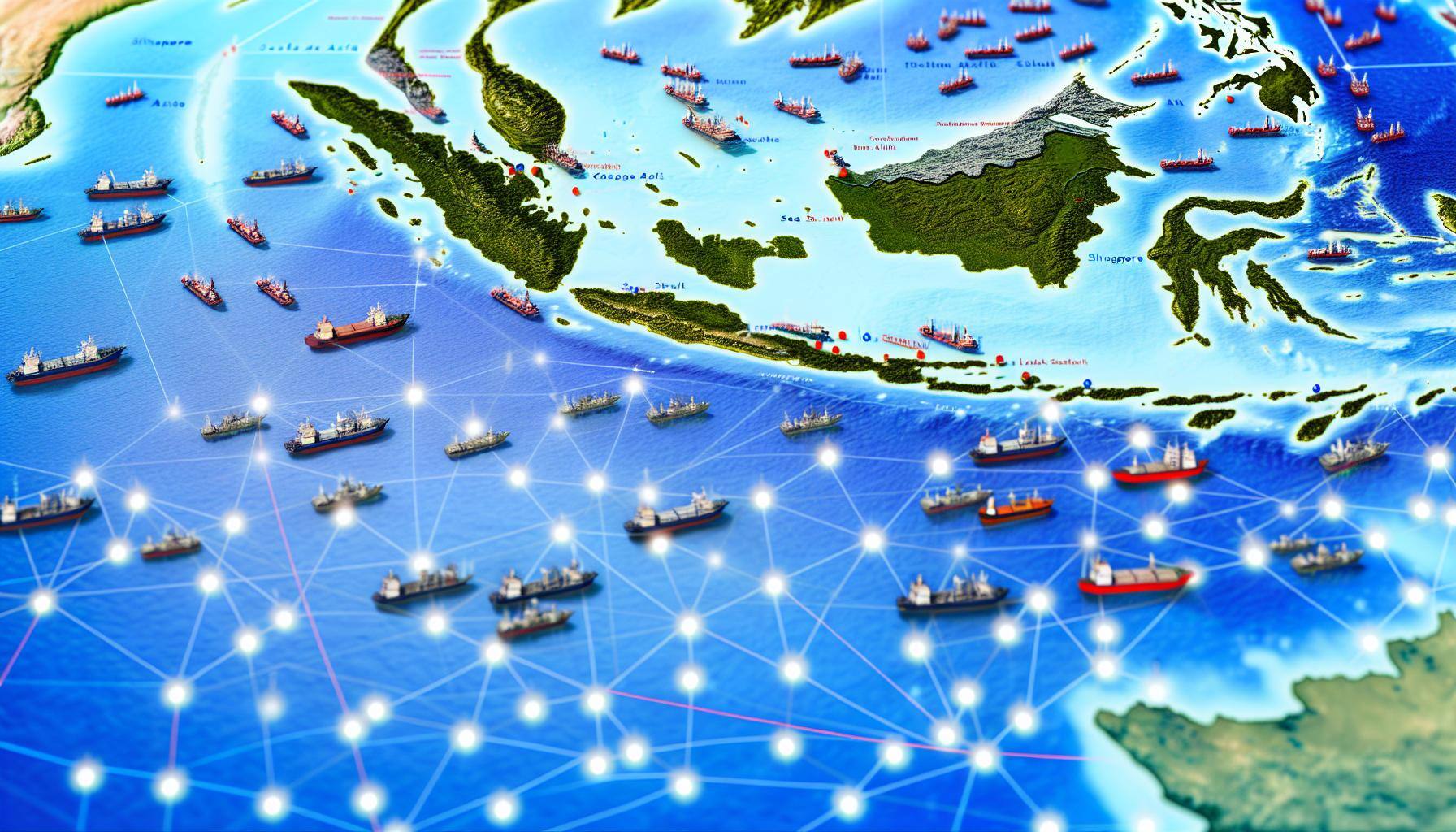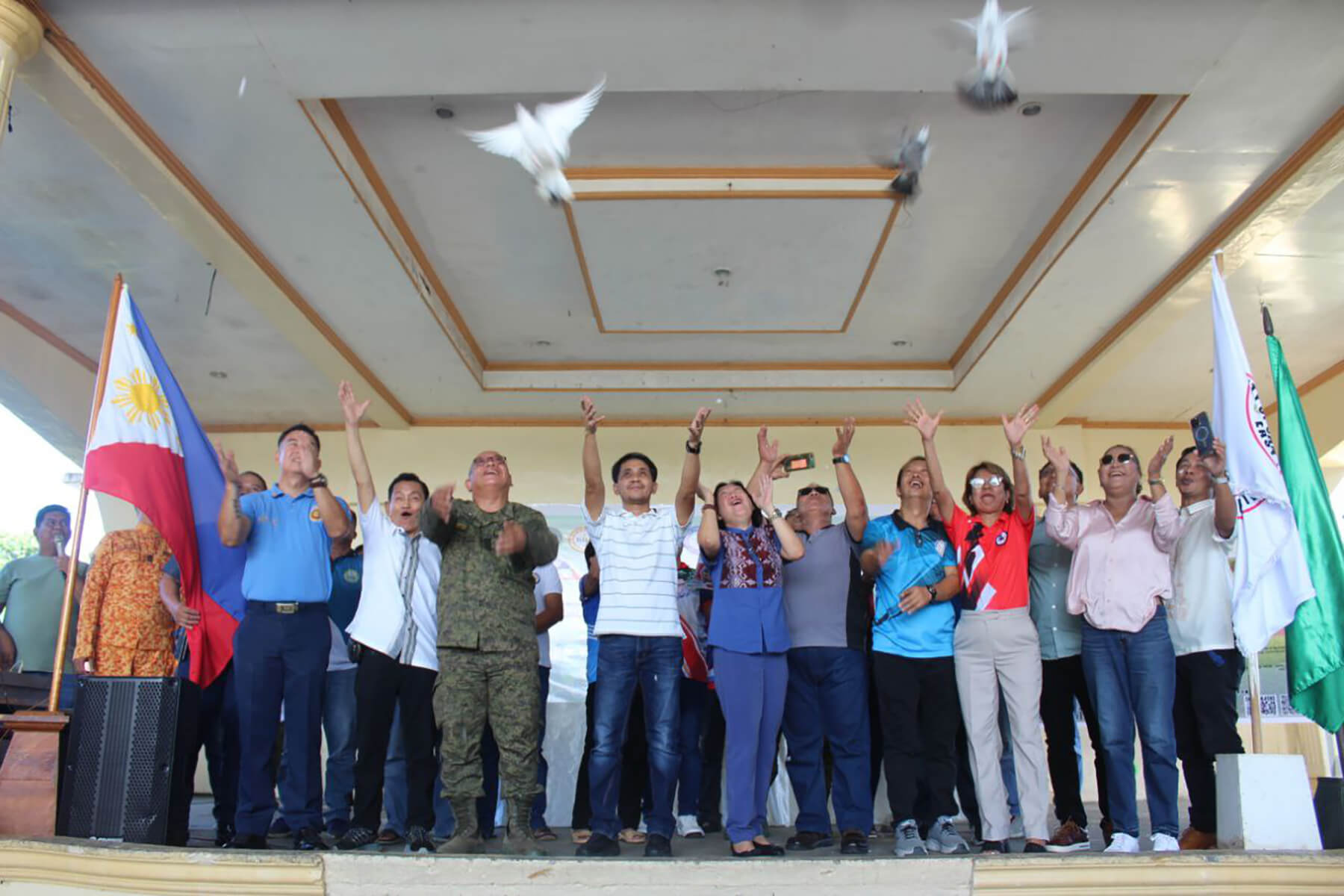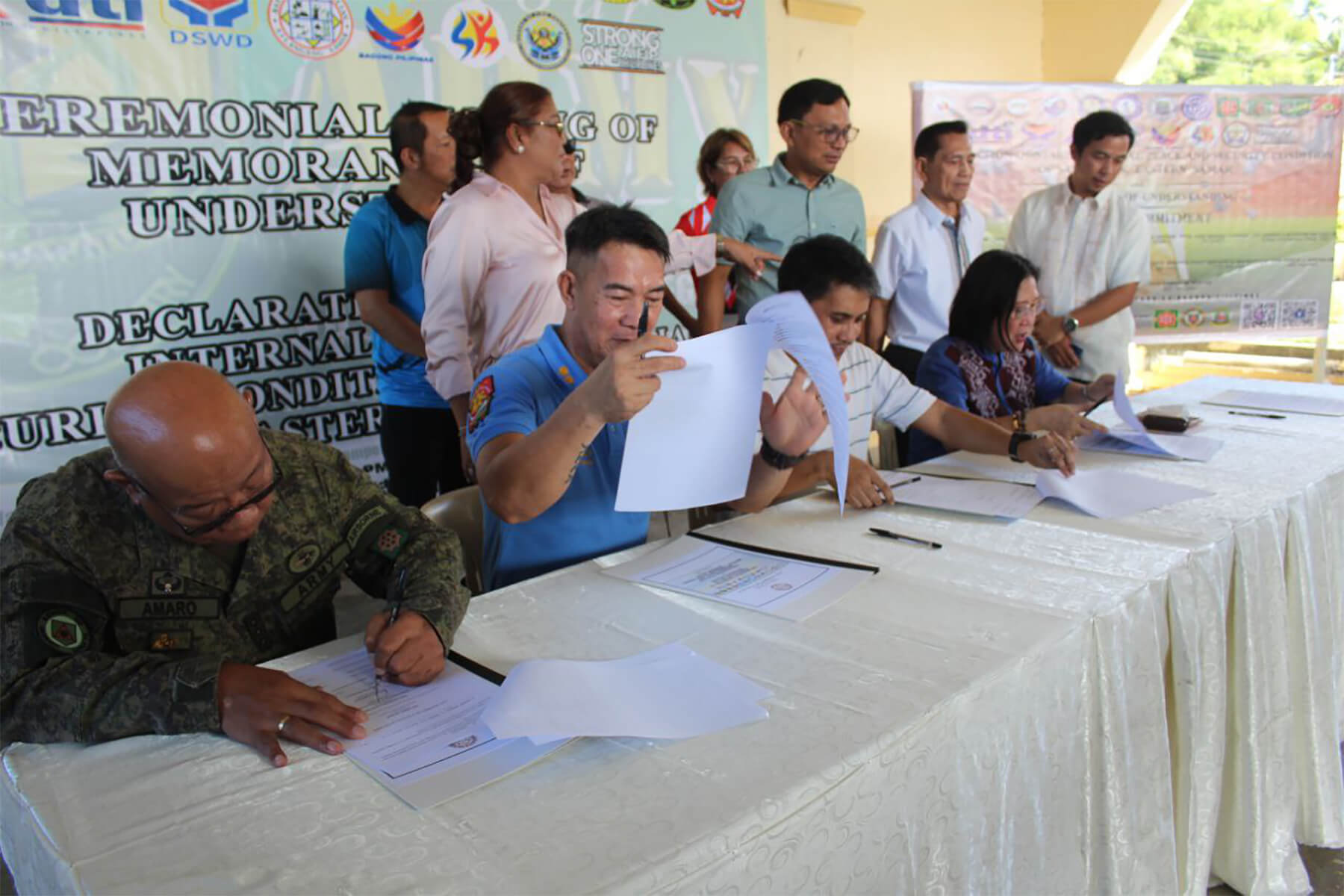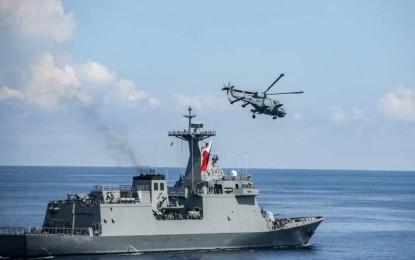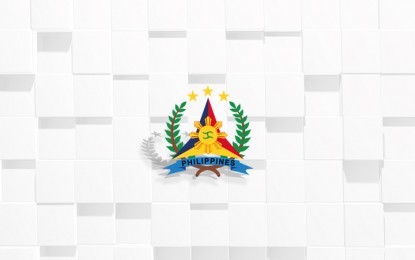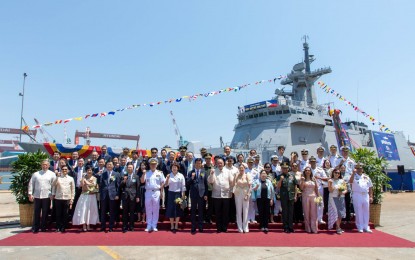From Palawan News (Jun 21, 2024): Chronology: The ongoing maritime dispute between the Philippines and China (By PN Conversations Research Team)

The South China Sea is the setting for an ongoing geopolitical conflict between the Philippines and China, which revolves around their conflicting territorial claims and strategic objectives.
This feature explores the intricate chronology of events, diplomatic strategies, and regional consequences that are influencing one of Asia’s most difficult conflicts.
Setting the Stage
Since the mid-20th century, the Philippines and China have asserted conflicting ownership of important maritime features in the West Philippine Sea, including Scarborough Shoal and Ayungin Shoal. China’s claim is mostly based on the contentious nine-dash line, which it claims is its historical boundary covering a substantial portion of the South China Sea. On the other hand, the Philippines asserts its rights in accordance with the United Nations Convention on the Law of the Sea (UNCLOS), contesting China’s extensive territorial aspirations.
1947 (China Marks South China Sea Claims)
China, under the nationalist Kuomintang party, demarcates its territorial claims in the South China Sea with an eleven-dash line, covering most of the area including the Pratas Islands, the Macclesfield Bank, and the Paracel and Spratly Islands. In 1949, the People’s Republic of China (PRC) was declared, and in 1953, the dashes were reduced to nine. China continues to use the nine-dash line to justify its territorial claims.


1960-1969 (UN Report Finds High Probability of Oil in East China Sea)
Geological surveys in 1968 and 1969 by the UN Economic Commission for Asia and the Far East found substantial energy deposits in the seabed between Taiwan and Japan. The report rekindled interest in the region and prompted China to assert sovereignty over the Senkaku/Diaoyu Islands in May 1970.
January 19, 1974 (China Claims Paracel Islands)
Chinese forces occupy the western portion of the Paracel Islands, seizing a South Vietnamese garrison. Vietnam upholds its claims to the Paracels and Spratlys after the reunification of the country.
March 11, 1976 (Philippines Discovers Oil Field)
The Philippines finds the Nido oil field off Palawan Island, marking the first oil discovery in the Northwest Palawan Basin. Philippine Cities Service, Inc. began drilling and commercial production in 1979, yielding 8.8 million barrels.
December 10, 1982 (UNCLOS Is Established)
The United Nations Conference on the Law of the Sea (UNCLOS) defines nations’ rights and responsibilities in their use of ocean waters, based on exclusive economic zones and continental shelves. The treaty came into force on November 14, 1994.
March 14, 1988 (China Sinks Three Vietnamese Ships)
China and Vietnam clash on Johnson Reef in the Spratly archipelago. The Chinese navy sank three Vietnamese vessels, killing seventy-four sailors, marking China’s first armed conflict over the Spratly archipelago.
February 1992 (China Passes Law on the Territorial Sea)
China enacts the Law on the Territorial Sea and the Contiguous Zone, claiming the entire South China Sea based on historical rights. The move is seen as an attempt to enhance maritime security.
January 1996 (Mischief Reef Incident)
Chinese naval vessels clash with a Philippine navy gunboat near Capones Island in the Mischief Reef. The incident triggers a crisis in Sino-Philippine relations and revives the U.S.-Philippine military ties.
January 1998 (China-U.S. Military Agreement)
China and the United States sign the Military Maritime Consultative Agreement to prevent naval misunderstandings and promote defense dialogue.
1999 (Intentional Grounding of BRP Sierra Madre at Ayungin Shoal)
BRP Sierra Madre, a Philippine Navy ship, was intentionally grounded at Ayungin Shoal (Second Thomas Shoal) in the West Philippine Sea. This intentional grounding was aimed at maintaining a Philippine presence in the area, which is part of the Spratly Islands chain and is also claimed by China.
November 2002 (ASEAN and China Code of Conduct)
China and ASEAN states sign the Declaration on the Conduct of Parties in the South China Sea, a nonbinding agreement aiming to ease tensions and promote conflict resolution.
July 2010 (China Becomes World’s Biggest Energy Consumer)
The International Energy Agency reports that China surpasses the United States as the largest energy consumer, highlighting the strategic importance of East and South China Sea trade routes.
July 23, 2010 (United States Affirms Interest in South China Sea)
U.S. Secretary of State Hillary Clinton affirms American interests in “open access to Asia’s maritime commons” at a security meeting in Hanoi, expanding U.S. involvement in regional disputes.
This period marks the initial confrontations between China and the Philippines over territorial claims in the South China Sea. In May 2013, tensions escalated when Chinese vessels, including government ships, were spotted at Ayungin Shoal, leading to a standoff. The Philippines vowed to defend its sovereignty, highlighting the strategic importance of Ayungin Shoal, which is part of the Kalayaan Island Group off Palawan.
February 25, 2011 (Chinese Frigate Fires at Philippine Boats)
The Chinese frigate Dongguan fires three shots at Philippine fishing boats near Quirino Atoll after instructing them to leave.
March 28, 2011 (Philippines Bolsters Military Presence)
The Philippines increases its military presence along its western maritime border following threats from Chinese boats.
May 23, 2011 (China Builds Military Garrisons)
A News5 report reveals that China has built military garrisons and outposts in six reefs part of the Kalayaan Island Group.
June 1, 2011 (Philippines Summons Chinese Envoy)
The Philippines summons a Chinese envoy to express concern over naval incursions near the Spratly Islands and Amy Douglas Bank.
July 4, 2011 (China Protests Philippine Exploration Bids)
China protests the Philippines’ bids for exploration in the Reed Bank, telling the Philippines to refrain from infringing on China’s sovereignty.
October 20, 2011 (Philippine Naval Ship Rams Chinese Boat)
A Philippine naval ship accidentally rams a small Chinese fishing boat near the Reed Bank. The Philippines issues an apology.
October 2011 (Philippines Renames South China Sea)
The Philippine government starts referring to the South China Sea as the West Philippine Sea in all official communications.
November 17, 2011 (Obama Cites U.S. Strategic Rebalancing to Asia-Pacific)
President Obama announces the U.S. will pivot its strategic focus to the Asia-Pacific, with new troop deployments to Australia and Singapore.
April 8, 2012 (Scarborough Shoal Incident)
The Philippines dispatches a warship to confront Chinese fishing boats in Scarborough Shoal, leading to a two-month standoff with China.
April 11, 2012 (Philippine Navy Confronts Chinese Vessels)
Philippine surveillance aircraft identify Chinese fishing vessels at Scarborough Shoal, prompting the deployment of the warship BRP Gregorio Del Pilar.
April 12, 2012 (Philippines Withdraws Warship)
The Philippines withdraws its largest warship from Scarborough Shoal, but the standoff with China continues.
April 14, 2012 (Chinese Vessels Leave Scarborough Shoal)
Chinese fishing vessels and a marine survey ship leave Scarborough Shoal, allegedly with an illegal harvest of endangered species.
April 16, 2012 (Balikatan Military Exercises)
The United States and the Philippines begin annual Balikatan military exercises on and around Palawan Island, prompting protests from China.
May 16, 2012 (Fishing Ban Takes Effect)
China and the Philippines impose a fishing ban at Scarborough Shoal.
June 21, 2012 (China Establishes Sansha Military Garrison)
China’s Central Military Commission approves the establishment of Sansha, a military garrison for the South China Sea.
July 18, 2012 (China Blocks Philippine Access to Shoal)
China blocks Philippine ships and fishing vessels from entering the lagoon at Scarborough Shoal by setting up barriers.
July 13, 2012 (Chinese Frigate Runs Aground)
A Chinese missile frigate runs aground on Hasa Hasa Shoal, a contested territory near Palawan Island.
July 13, 2012 (ASEAN Fails to Issue Communique)
ASEAN fails to issue a communiqué at its annual meeting in Cambodia due to disagreements over China’s claims in the South China Sea.
September 12, 2012 (Philippines Renames Maritime Areas)
Philippine President Benigno Aquino III signs an administrative order naming maritime areas on the western side of the Philippine archipelago as the West Philippine Sea.
September 12, 2012 (China Claims Territorial Sea Baselines)
China declares territorial sea baselines around the Senkaku/Diaoyu Islands in response to Japan’s nationalization of the islands.
September 25, 2012 (China Launches First Aircraft Carrier)
China launches its first aircraft carrier, the Liaoning, marking a significant step in its naval modernization.
September 19, 2012 (Senator Trillanes Negotiates with China)
Senator Antonio Trillanes IV emerges as a negotiator for Philippine President Benigno Aquino III in Beijing.
November 1, 2012 (China Maintains Permanent Presence at Shoal)
China informs the Philippines that its coast guard vessels will remain permanently at Scarborough Shoal.
November 22, 2012 (Philippines Protests Chinese Passport Design)
The Philippines protests China’s new e-passport design featuring the nine-dash line, claiming it shows China’s sovereignty over virtually the entire South China Sea
Landmark Legal Battles
The Philippines pursued legal avenues to resolve the maritime disputes, culminating in the filing of a case against China at the Permanent Court of Arbitration (PCA) in The Hague in 2013. The PCA’s ruling in July 2016, which invalidated China’s expansive nine-dash line claim and affirmed the Philippines’ rights under UNCLOS, marked a significant legal victory for Manila. China, however, refused to accept the ruling, escalating tensions in the region.
Despite the legal victory, tensions have continued to escalate. Incidents such as the 2016 seizure of a U.S. underwater drone by a Chinese warship in the South China Sea underscored the volatile nature of the dispute. Near-collisions between U.S. and Chinese warships near the Spratly Islands in 2018 further exacerbated tensions, leading to diplomatic standoffs and military posturing.
January 22, 2013 (Philippines Files UN Arbitration Over China’s Claims)
The Philippines initiates an international arbitration case under UNCLOS against China’s claims of sovereignty over the Spratly Islands and Scarborough Shoal. China rejects the process, but the arbitration continues without its participation.
February 19, 2013 (China Rejects Philippine Move to PCA)
China officially rejects the Philippines’ move to bring South China Sea territorial issues to the Permanent Court of Arbitration (PCA), dismissing Manila’s claims as “legally infirm.”
May 21, 2013 (Chinese Presence at Ayungin Shoal)
30 Chinese fishing vessels, accompanied by government ships, are spotted at Ayungin Shoal near Palawan, sparking tensions.
May 23, 2013 (Philippines Vows Defense)
The Philippines pledges to defend its territory after a standoff with a Chinese warship circling a South China Sea reef occupied by Filipino Marines.
June 7, 2013 (China’s New Map)
China releases a revised map asserting a 10-dash line encompassing Taiwan, escalating territorial disputes without clarifying legal justifications.
July 5, 2013 (Return to Scarborough Shoal)
Chinese vessels return to Scarborough Shoal soon after leaving, heightening tensions in the West Philippine Sea.
November 2013 (Super Typhoon Yolanda and Ayungin Reef)
Super Typhoon Yolanda forces Chinese vessels to retreat from Ayungin Reef, ensuring the safety of Filipino Marines stationed there.
November 23, 2013 (China Declares Air Defense Zone)
China establishes an Air Defense Identification Zone over the East China Sea, drawing international criticism and escalating regional tensions.
January 1, 2014 (China Imposes Fishing Rule)
China imposes fishing regulations in the West Philippine Sea, defying objections from the Philippines, Vietnam, and the United States.
January 27, 2014 (Philippines Protests Water Cannon Incident)
The Philippines protests against China after its coast guard allegedly fires a water cannon at Filipino fishermen near Bajo de Masinloc.
February 26, 2014 (China Offers Incentives)
China proposes incentives, including mutual ship withdrawal from Scarborough Shoal, amid escalating tensions.
March 10, 2014 (Philippines Expelled from Ayungin Shoal)
Philippine ships are expelled by the Chinese coast guard from Ayungin Shoal, sparking diplomatic protests.
March 30, 2014 (Philippines Submits Memorial to PCA)
The Philippines submits a 4,000-page pleading to the PCA in The Hague regarding its maritime disputes with China.
April 28, 2014 (U.S., Philippines Sign Defense Pact)
The United States and the Philippines sign the Enhanced Defense Cooperation Agreement, increasing U.S. military presence amid regional tensions.
October 26, 2015 (U.S. Patrols Near Chinese Islands)
A U.S. warship patrols within 12 nautical miles of Chinese-built islands in the South China Sea, asserting freedom of navigation.
July 12, 2016 (PCA Rules Against China)
The PCA rules in favor of the Philippines, invalidating China’s nine-dash line claim in the South China Sea, which China rejects.
Diplomatic Maneuvers and Strategic Shifts
Philippine leadership, under Presidents Duterte and Marcos Jr., has navigated a delicate balance between economic engagement with China and safeguarding national security interests. While Duterte pursued closer economic ties with Beijing, including bilateral dialogue on disputed territories, Marcos Jr. welcomed expanded U.S. military presence to bolster Philippine defenses in the South China Sea.
The dispute has garnered international attention, prompting responses from regional allies and global powers. Joint military exercises and patrols involving the United States, Japan, and Australia have aimed to uphold freedom of navigation and challenge China’s assertive actions in the region. The United States’ reaffirmation of its defense treaty commitments to the Philippines underscores efforts to stabilize the maritime environment amidst rising tensions.
November 20, 2016 (Duterte Bans Fishing)
Philippine President Duterte establishes a no-fishing zone at Scarborough Shoal amid warming ties with China.
December 15, 2016 (China Seizes U.S. Drone)
China seizes a U.S. underwater drone in the South China Sea, later returning it amid diplomatic tensions.
February 14, 2016 (China Deploys Missiles)
China deploys surface-to-air missiles on Woody Island, escalating tensions in the South China Sea.
April 5, 2019 (Duterte Warns China)
President Duterte warns China over ships near Thitu Island, vowing a tough response if provocations continue.
February 2020 (Tensions Rise in South China Sea Amid Pandemic)
China escalates its territorial assertions in the South China Sea amidst the global coronavirus pandemic. In February 2020, a Chinese naval ship reportedly targeted its weapons control system at a Philippine naval vessel in the Spratly Islands. The following month, China inaugurated new research facilities, including defense installations and military-grade airstrips, on Fiery Cross and Subi Reefs. In April, Vietnam protested vehemently after a Chinese vessel collided with and sank a Vietnamese fishing boat near the Paracel Islands. Shortly thereafter, Beijing establishes administrative districts encompassing the Paracel and Spratly Islands, triggering condemnations from the Philippines and Vietnam.
March 2021-November 2022 (Chinese and Philippine Navies Face Off)
Tensions escalate between China and the Philippines as Beijing intensifies intimidation tactics following Philippine President Duterte’s firm support for the 2016 Hague ruling rejecting the nine-dash line. In March 2021, China deployed approximately two hundred ships to Whitsun Reef, located within the Philippines’ exclusive economic zone (EEZ). Despite China claiming these vessels are part of a “fishing fleet,” Manila suspects they are operated by military personnel. In November 2022, during a visit by U.S. Vice President Kamala Harris to the Philippines, the Philippine navy accuses China’s coast guard of seizing debris from a suspected Chinese rocket that had landed in Philippine waters
January 3-5, 2023 (Marcos and Xi Agree to Direct Communications on South China Sea)
President Ferdinand Marcos concludes a three-day visit to Beijing, establishing direct communication channels with Chinese President Xi Jinping aimed at managing South China Sea disputes diplomatically.
February 2, 2023 (Philippines Expands U.S. Military Access Amid Tensions)
The Philippines grants the United States enhanced access to four additional military bases under the Enhanced Defense Cooperation Agreement (EDCA), positioning them strategically towards Taiwan and the Spratly Islands.
February 13-14, 2023 (Philippines Accuses China of Laser Incident at Second Thomas Shoal)
Manila accuses China’s coast guard of directing a “military-grade laser light” at a Philippine Coast Guard vessel conducting a resupply mission to troops stationed aboard the BRP Sierra Madre at the disputed Second Thomas Shoal. President Marcos summons China’s ambassador in protest.
May 1, 2023 (Biden and Marcos Affirm Commitment to South China Sea Navigation)
U.S. President Joe Biden hosts Philippine President Marcos at the White House, marking the first visit by a Philippine leader in a decade. Both leaders emphasize their unwavering commitment to freedom of navigation and overflight in the South China Sea.
May 3, 2023 (U.S. and Philippines Strengthen Mutual Defense Treaty)
The United States and the Philippines agree on updated guidelines for their 1951 Mutual Defense Treaty, clarifying mutual defense obligations in response to armed attacks anywhere in the South China Sea.
June 6, 2023 (Trilateral Coast Guard Exercises Held Amid South China Sea Tensions)
The coast guards of the United States, Japan, and the Philippines conduct their first joint trilateral exercises in the South China Sea, aimed at enhancing maritime security amidst rising regional tensions.
August 5, 2023 (Philippines Accuses China of Blocking and Firing at Supply Boat)
The Philippines accuses China’s coast guard of obstructing and firing a water cannon at a supply boat transporting provisions to troops stationed at the Second Thomas Shoal (Ayungin Shoal), escalating tensions over territorial disputes.
November 16, 2023 (Philippines Calls on China to Remove Illegal Structures in EEZ)
The Philippines formally demands China to dismantle all illegal structures within its exclusive economic zone (EEZ), cease reclamation activities, and be accountable for environmental damages caused in disputed areas.
January 3, 2024 (Philippines and U.S. Conduct Joint Patrol Amid China’s Naval Activity)
The Philippines and the United States carry out their second joint patrol in the South China Sea, coinciding with China’s naval and air activities in the contested waters, highlighting ongoing regional military maneuvers.
March 5, 2024 (Philippines Condemns China Over Collision During Resupply Mission)
Manila accuses China’s coast guard of reckless actions leading to a collision with a Philippine vessel during a resupply mission at the Second Thomas Shoal, causing damage and injuries among Filipino crew members.
March 20, 2024 (China Warns U.S. Against Interference in South China Sea)
China criticizes U.S. Secretary of State Antony Blinken’s statements in Manila regarding security agreements, cautioning against U.S. involvement in South China Sea disputes and urging non-interference.
March 24, 2024 (China and Philippines Clash Over South China Sea Incident)
China’s coast guard defends actions against Philippine vessels near Second Thomas Shoal, prompting Philippine condemnation of provocative maneuvers, including the use of water cannons damaging Filipino ships.
April 7, 2024 U.S., (Japan, Australia Conduct Maritime Activity in Philippine EEZ)
Defense forces of the U.S., Japan, and Australia engage in joint maritime exercises within the Philippines’ EEZ in the South China Sea, reinforcing security cooperation amidst regional tensions.
April 30, 2024 (Philippines Accuses China of Harassment in Scarborough Shoal)
The Philippines accuses China’s coast guard of harassing and damaging two Filipino boats in the disputed Scarborough Shoal, rejecting Beijing’s claims of expelling Philippine vessels from the area.
June 17, 2024 (China and Philippines Trade Accusations Over South China Sea Collision)
China and the Philippines exchange accusations following a collision in the South China Sea, with the United States highlighting bodily injuries and damage to a Philippine vessel amid heightened regional tensions.
As tensions persist, some experts suggest that diplomatic efforts remain crucial in preventing military escalation and promoting peaceful resolution. The Philippines, in its capacity, continues to advocate for international law and multilateral cooperation in addressing maritime disputes, emphasizing the need for adherence to UNCLOS principles and regional stability.
Philippines-China maritime dispute reflects a microcosm of broader geopolitical rivalries and strategic interests in the Asia-Pacific region. Navigating these turbulent waters requires nuanced diplomacy, international cooperation, and steadfast commitment to upholding maritime laws—a task that will shape regional dynamics for years to come.
https://palawan-news.com/chronology-the-ongoing-maritime-dispute-between-the-philippines-and-china/

